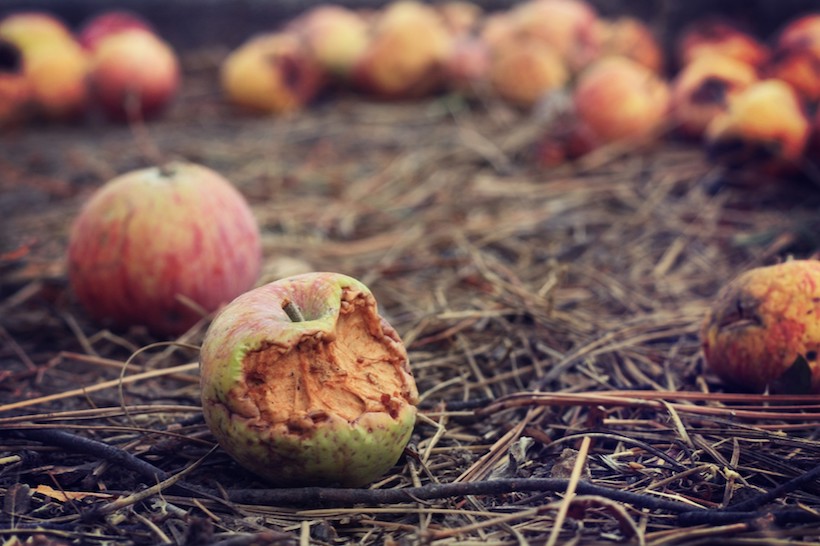The food that never left the farm
A chef’s take on reducing farm-level food waste
Donavyn Coffey • October 24, 2018

Food gets wasted before it ever leaves the field. [Credit: Cristie Guevara | CC0 Public Domain]
Jumping from his chair, Chef Dan Barber scooped up the fern garnishing the front of the stage. He extended the bulky plant out at the surprised audience, giving them an aerial view of the leafy plant, three feet in diameter.
He was making a point about broccoli harvests: Only the small, center portion of each plant, or the florets, is harvested for food. About 70 percent of the broccoli plant — approximately the size of the fern Barber was waving around as a prop — is left in the field to rot, even though the stems and leaves are perfectly edible.
“Now that’s some food waste,” exclaimed Barber, as the audience at last week’s Food Tank Summit on Food Waste in New York City laughed uneasily.
He was making an important point. We usually think of food waste as vegetables tossed in an alleyway behind a restaurant, or soggy lettuce in the bottom of a refrigerator. Food waste on a farm, like Chef Barber’s broccoli example, is less familiar. It’s also a surprisingly big part of the world’s food waste problem.
Of the marketed yield — or the amount of a crop that makes it to market — the United Nations Food and Agriculture Organization (FAO) estimates that 20 percent more is left behind unharvested in the field. In industrialized countries, the farm is where the majority of fruit and vegetable waste takes place due to retailer grading. Retailers grade fruits and vegetable crops based on their appearance and only purchase from the farmer what is most likely to sell. For example, a crooked cucumber might be perfectly edible, but it won’t be accepted by retailers because straight cucumbers sell more readily.
A recent study found that food loss on North Carolina vegetable farms may be worse than the FAO estimates. An average harvest left an additional 42 percent of marketable vegetables to rot in the field. That’s an astonishing 4,500 pounds per acre of fresh and nutritious food going to waste.
The study’s lead author, Lisa Johnson of North Carolina State University, said that most vegetables are left behind because farmers can’t sell them. Appearance can be the limiting factor, she says. Bruised or oddly shaped vegetables are unmarketable. In other cases farmers can’t get a high enough price for their crop to justify continuing the harvest. They harvest only what they can sell, and leave behind the rest to better manage cost. Her paper suggested that a complete harvest of all edible vegetables on the field could bring new food into the American food system without requiring more resources for growing. This could financially benefit farmers while combating the U.S.’s growing problems with food insecurity.
Transportation and storage within the food system are not yet able to handle the additional yield, says Johnson. First, there needs to be somewhere for the additional produce to go, and a way to get it there.
Dan Barber, the acclaimed owner and chef of Blue Hill in Manhattan, echoed that need at the Food Tank summit. He also goes one creative step further by arguing that we need tastier food and better seeds to make throwaway plants more valuable.
Barber says 90 percent of the United States’ seed genetics are currently owned by three companies: Dow-DuPont, Bayer-Monsanto and ChemChina-Syngenta. Those seeds, says Barber, are bred to withstand long transport, last in extended storage and grow in any region of the world, from Mexico to Canada to China. As a self-proclaimed advocate of deliciousness, Barber says the obvious question is, “If we can breed plants to do all of this, why can’t breeders make squash taste better?”
This brings us back to the imaginary broccoli plant (it was actually a fern) that Barber shook at the audience. What if the leaves were flavorful and the stems were sweet? What if farmers could sell the entire plant instead of just the florets?
Barber thinks that day is coming. Right now, he’s collaborating with plant breeders and growers to create new seeds through the company Row 7. Most seed companies breed new plant varieties to have higher yield or withstand certain environments. Row 7 seed varieties are bred for taste first and yield second. They have seven commercially available seed varieties. Potatoes that taste buttery on their own and sweeter beets are among the lineup.
Johnson recalled a conversation with some of Barber’s Blue Hill Farm colleagues, where she was asked if growers were excited about the prospect of harvesting and selling all parts of a plant.
“Growers aren’t really thinking about that,” Johnson said. Growers aren’t taking the time to harvest stems and leaves because they can’t even get all of their primary crop off the field. Before we can think about harvesting additional parts of the plant, we have to successfully harvest the the fruits and vegetables being left on the field, she said. If we find a way to collect, transport and store currently wasted harvest, we’re one step closer to a system that could also support harvesting broccoli stems and leaves.
Food that tastes good is part of finding that solution, says Barber.
“In the last 100 years we’ve targeted what we want and leave the rest behind,” says Barber, “But what if we started to look at making the plant something to enjoy in its entirety?”